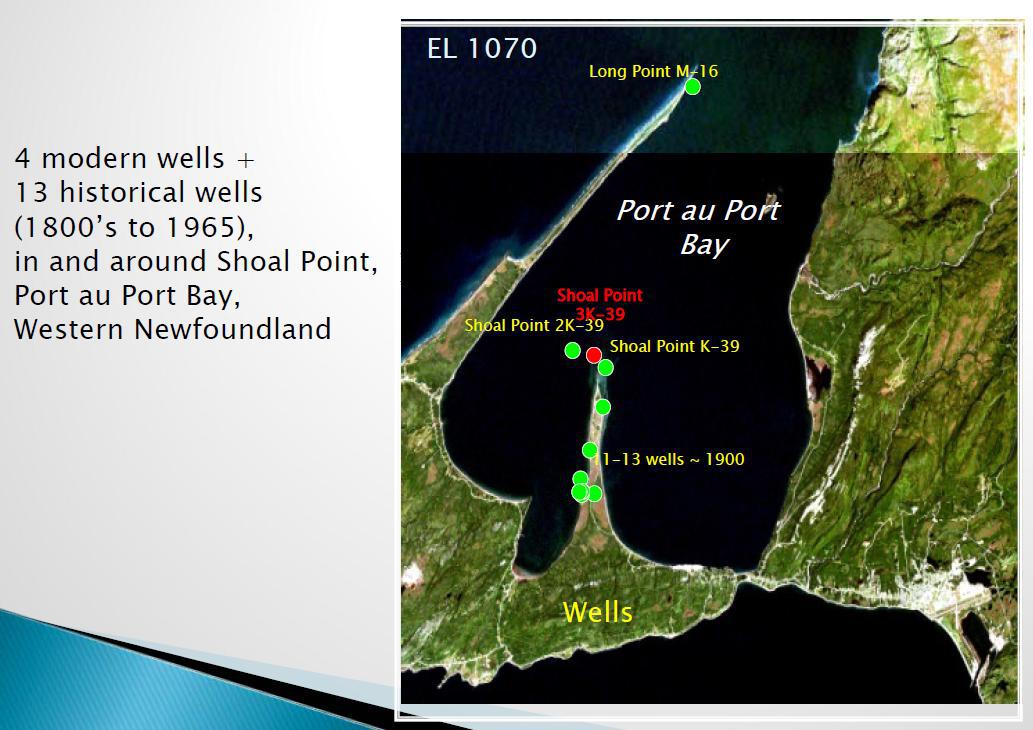A recent posting on LinkedIn inspired me to elaborate on this subject. Much more could be written. The subject under discussion is the drilling of "horizontal" wells, which are so crucial to the great increases in oil and gas production we are now seeing from formerly unproductive shales around the world. Of course hydraulic fracturing is equally important (and sensational, thus "newsworthy").
I know from experience that it is possible to steer an actively drilling (and fast!) well AND it is possible to keep the drill bit within a few feet, sometimes less, of a desired stratigraphic horizon, "pay zone", or "target". This is really what determines the success or failure of a well in these new "unconventional" shale plays.
Yes, of course the engineering aspects of drilling and completion are important, (a most respectful hat tip to my engineering friends). And of course my geophysical seismic-interpreting friends provide an invaluable glimpse into the subsurface before the drilling begins. However, the real success of these plays is dependent upon a knowledge of the
stratigraphy of the rocks.
Some things never change. I also think this can only be learned and appreciated by looking at rocks in the field, not only via "electric" logs and/or on computer screens. That is why geologists do field work, sweat, get dirty, and break rocks with hammers. They should anyway, and the more the better.
So, all new technology, the wondrous ability to turn a well bore from vertical to "horizontal", to follow a layer of rock sometimes only a few feet thick, thousands of feet beneath the surface,
all comes down to a geologist knowing "where" that well bore is relative to the local stratigraphy. If this is not correct, all the best seismic, fracture detection, petrophysics, geochemistry, and hydraulic fracturing are for naught. If your well bore is in the wrong place you're just "outta luck bubba".
I am sure the successful drillers of all the shale plays being developed know these things and more. Unfortunately, as is usually the case, whether in the oil and gas business, or the mining industry, the little guys make the discoveries and then the big guys swoop in and buy them out. Think XTO and Exxon/Mobil, Petrohawk in the Eagle Ford, Brigham in the Bakken, or the beginning of the Barnett Shale play with George Mitchell's Mitchell Energy being acquired by Devon, and the list goes on. Every oil company in the world wants to know how to produce these shales. However, I'll share a secret, it is not all computer software and drilling technology.
The secret lies in Wallace Pratt 's dictum that "Oil is found in the minds of men". (I must add, men AND women with a knowledge of stratigraphy, and I've had the good fortune of being taught by some of the best, e.g. Dott, Pray, Weimer.... to name a few.)
from Pete (
source) Subject:
Geosteering & Geonavigating Oil & Gas Wells
•
In an attempt to simplify and clarify, I think most drilling and production challenges are directly related to stratigraphy, or the vertical and lateral changes in the characteristcs of sedimentary rocks. Look at any road cut through a layer of sedimentary rocks, look closely at the detail, then imagine drilling through this. The overwhelming influence on hydrocarbon production by the stratigraphy of the reservoir rocks is immediately apparent.
Therefore, whether "proactive" or retroactive, the most valuable form of geosteering or geonavigation is that which can show the drillers and engineers precisely where they are relative to the known surrounding rock layers (stratigraphy). I know this can be done, simply and inexpensively. The key element is the interpreter as much as the tools. The successful developers of plays like the Barnett, Haynesville, Bakken, Marcellus, and Eagle Ford Shales know this, although they tend to keep quiet about it.
(source)
The Permian through Jurassic strata of the Colorado Plateau area of southeastern Utah demonstrate the principles of stratigraphy. These strata make up much of the famous prominent rock formations in widely spaced protected areas such as Capitol Reef National Park and Canyonlands National Park. From top to bottom: Rounded tan domes of the Navajo Sandstone; layered red Kayenta Formation; cliff-forming, vertically jointed, red Wingate Sandstone; slope-forming, purplish Chinle Formation; layered, lighter-red Moenkopi Formation; and white, layered Cutler Formation sandstone. Picture from Glen Canyon National Recreation Area, Utah.










